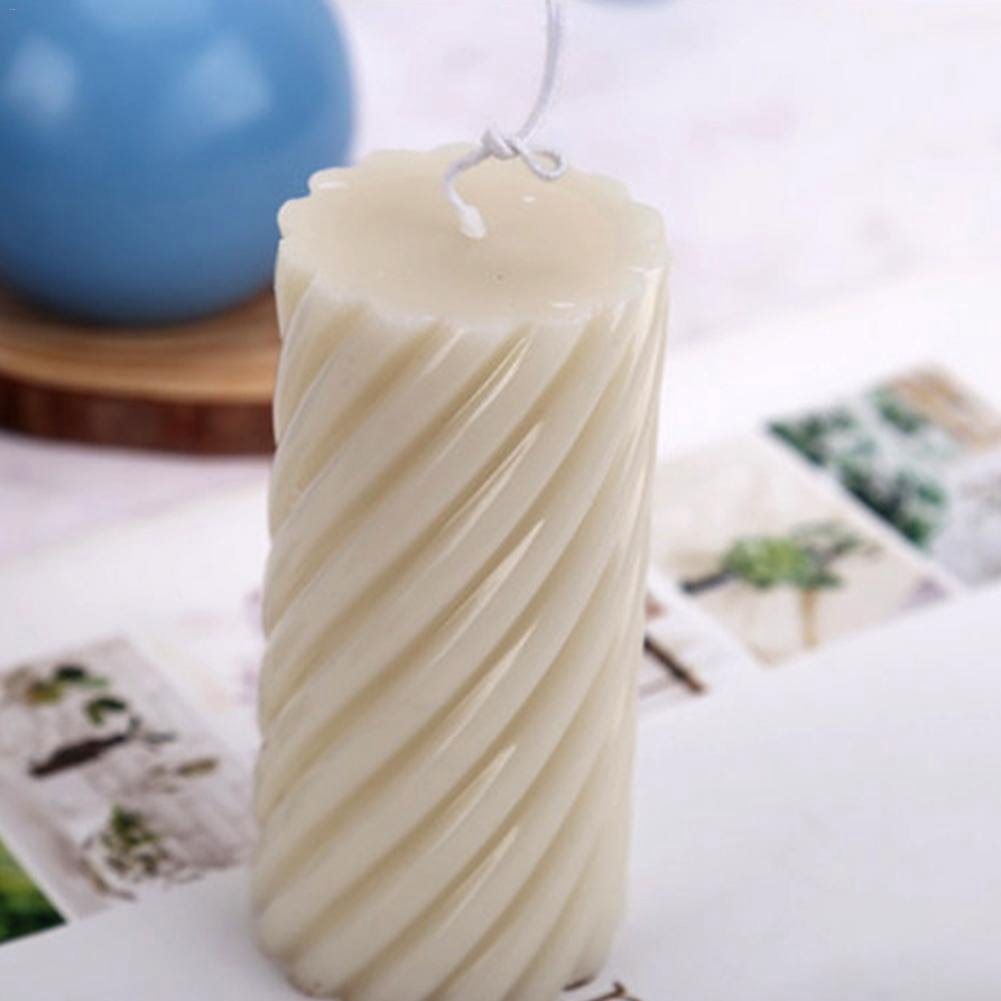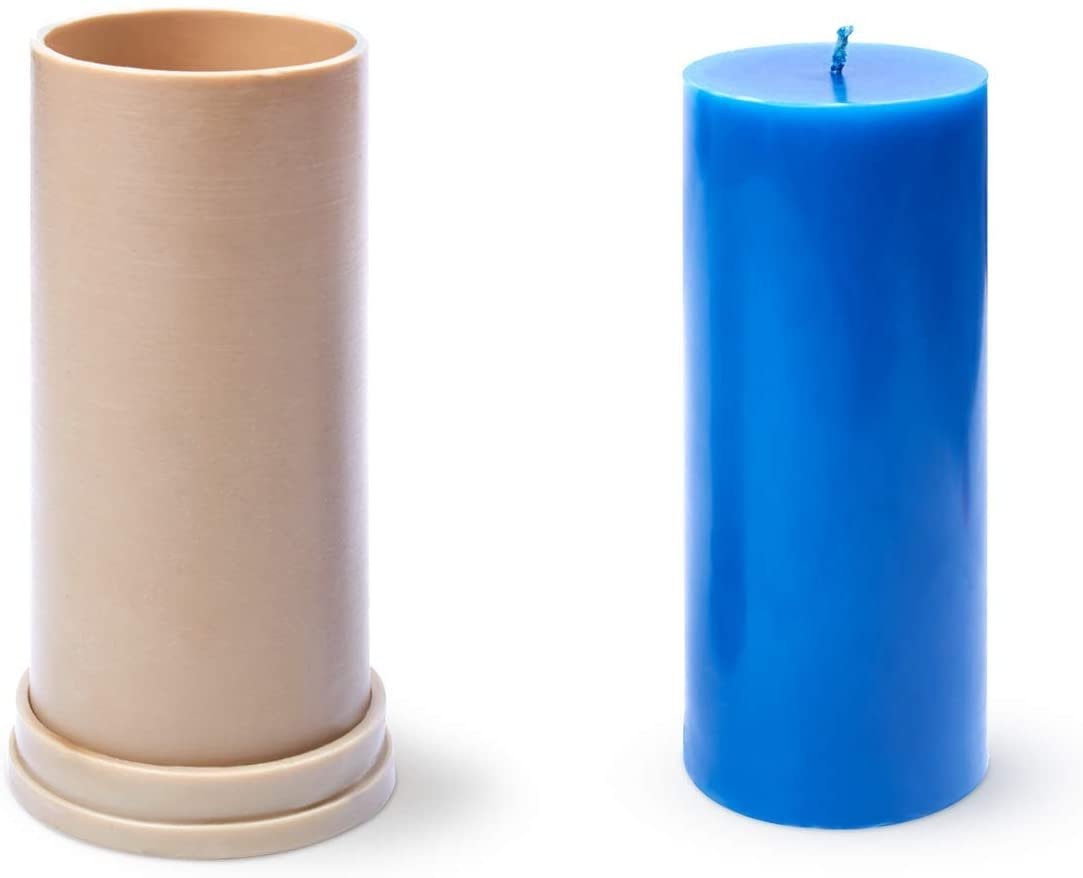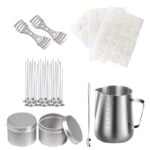Candle making has become increasingly popular in recent years, whether as a creative hobby or a small business venture. One of the key elements in candle making is the scent, as it plays a vital role in creating a captivating and inviting ambiance.
Many individuals often wonder if they can use regular scented oils, commonly found in commercial air fresheners or beauty products, for candle making. In this article, we will delve into the compatibility of regular scented oils in candle making and explore the advantages and potential issues that may arise.
Before diving into the specifics of using regular scented oils in candle making, it is important to understand the difference between these oils and essential oils. While essential oils are extracted directly from plants through various methods such as distillation or cold pressing, regular scented oils typically contain synthetic fragrance compounds. This fundamental distinction sets them apart in terms of scent intensity, longevity, and potential compatibility with different waxes used in candle making.
When considering using regular scented oils for candles, proper testing becomes paramount. Compatibility factors such as scent throw, burn performance, and even safety aspects must be thoroughly assessed before incorporating them into your candles. Throughout this article, we will discuss various techniques for using regular scented oils and provide step-by-step instructions on achieving optimal scent dispersion and burn performance.
By exploring the compatibility of regular scented oils in candle making, you can unleash your creativity and expand your options for crafting unique and enticing candles. Whether you are looking to add new dimensions to your existing candle-making business or embark on a new aromatic adventure as a hobbyist, understanding the possibilities and limitations of regular scented oils will empower you to create truly captivating fragrances for your candles.
Understanding the Difference
Regular scented oils and essential oils are two common options for adding fragrance to candles, but they differ significantly in their composition and properties. Regular scented oils are synthetic fragrances that are specifically formulated for use in various products, including candles.
These oils are typically a blend of aroma compounds and carrier oils that work together to create a desired scent. On the other hand, essential oils are natural extracts derived from plants through processes like steam distillation or cold-press extraction.
One advantage of regular scented oils is the wide range of scents available. Since these oils are synthetically created, fragrance manufacturers have more control over the scent profiles they can produce. This allows candle makers to choose from a vast selection of fragrances, including popular options like lavender, vanilla, or fruity blends.
Essential oils, on the other hand, offer a more natural option for those who prefer an organic approach to candle making. They come directly from plant sources and retain the characteristic aroma of the botanical material they were extracted from. This can be appealing to candle makers looking for a more holistic or eco-friendly option.
However, regular scented oils also have their advantages. They tend to be less expensive than essential oils since they can be mass-produced in larger quantities. Additionally, regular scented oils often provide a stronger and longer-lasting fragrance compared to essential oils due to their chemical composition.
When considering whether to use regular scented oils or essential oils in candle making, it’s important to assess your priorities and preferences. If you prioritize scent accuracy and variety, regular scented oils may be the better choice. On the other hand, if using natural ingredients is important to you or your customers, essential oils might be worth exploring despite their higher cost.
Compatibility Factors
Regular scented oils are a popular option for candle making enthusiasts who want to explore a wide variety of fragrance options. However, before incorporating regular scented oils into your candle making process, it is crucial to understand the compatibility factors and conduct proper testing. This section will delve into the essential factors to consider when assessing the compatibility of regular scented oils for candle making.
One of the key compatibility factors to consider is the flash point of the scented oil. Flash point refers to the temperature at which a scented oil can ignite when exposed to an open flame or spark. It is important to choose scented oils with a flash point above the burning temperature of the candle wax you are using.
If the flash point is below the burning temperature, it can cause a safety hazard and lead to excessive smoke or even fire. Therefore, always check and compare the flash points of your chosen scented oil and candle wax before proceeding with your candle making process.
Another factor to consider is how well the fragrance oil binds with the wax. Different waxes have different properties, and some may have better compatibility with certain types of fragrances than others.
Conducting small test batches with different regular scented oils and waxes can help determine their compatibility in terms of fragrance throw, scent dispersion, and burn performance. Keep in mind that some low-quality or cheap regular scented oils may not bind well with wax, resulting in poor scent throw or no scent release at all.
Additionally, it is important to assess how stable the scent remains over time in your candles. Some fragrances may fade or change significantly during the curing process or after burning for extended periods. Testing and monitoring your candles’ scent stability over time will help identify any changes in scent quality or longevity.
To ensure accurate testing, use consistent ratios when measuring fragrance oils and follow specific guidelines provided by suppliers or experts in candle making. Take note of any variations in appearance, texture, scent, and performance as you conduct your tests. This will help you determine the compatibility of regular scented oils with your candle making process and allow you to make informed decisions about which oils to use for your final products.
By considering factors such as flash point, binding properties, and scent stability, you can effectively test regular scented oils for compatibility in candle making. This attention to detail will ensure that the fragrances you choose enhance the overall quality of your candles and provide an enjoyable experience for both yourself and your customers.
Techniques for Using Regular Scented Oils in Candle Making
Incorporating Regular Scented Oils into Candle Wax
One technique for using regular scented oils in candle making is to incorporate them directly into the melted candle wax. This method allows for a thorough blending of the oil with the wax, ensuring an even distribution of scent throughout the candle. To do this, begin by melting your chosen wax according to its specific instructions.
Once the wax has reached the appropriate temperature, add a few drops of the regular scented oil per pound of wax. Stir gently but thoroughly to ensure proper dispersion.
Using Scented Oil Additives
Another technique for incorporating regular scented oils into candle making is through the use of scent additives. These additives are specifically designed to enhance and prolong fragrance in candles. They typically come in liquid form and can be added directly to the melted wax or during the cooling process. When using scented oil additives, it is important to follow the manufacturer’s instructions carefully, as each product may have different recommended usage rates.
Spray or Dip Method
For those who prefer a more subtle scent in their candles, the spray or dip method can be used with regular scented oils. This technique involves applying the scented oil directly onto a finished candle rather than incorporating it into the wax during the making process.
To use this method, simply prepare your regular scented oil by diluting it with an appropriate carrier oil or alcohol base. Then, either spray or dip your cooled and cured candles into this mixture, allowing them to absorb just enough fragrance for a light and gentle aroma.
By experimenting with these different techniques, candle makers can discover which method works best for their desired scent throw and overall experience. It is important to note that not all methods may yield satisfactory results with every type of regular scented oil, so testing and adjusting your approach might be necessary until you find the perfect combination for your candle making needs.
Potential Issues and Solutions with Regular Scented Oils in Candle Making
While using regular scented oils in candle making can provide a wide range of fragrance options, there are potential issues that may arise during the process. By understanding these challenges and implementing effective solutions, candle makers can overcome obstacles and create high-quality candles with regular scented oils.
One common issue that candle makers may encounter when using regular scented oils is poor scent throw. Scent throw refers to the ability of a candle to release its fragrance into the surrounding environment when it is lit. Regular scented oils may not have the same level of potency as essential oils, therefore they may not produce a strong enough scent.
To address this issue, candle makers can try increasing the concentration of the oil in their candle recipe or experimenting with different waxes that have better scent release properties. Additionally, using additives like stearic acid or Vybar can help enhance scent throw.
Another potential issue when using regular scented oils is that they may affect the burn performance of the candles. Some oils may contain ingredients that cause problems such as smoking, soot buildup, or uneven burning. To solve these issues, it is important to thoroughly test each oil before incorporating it into a large batch of candles.
Conducting burn tests will help identify any potential problems and allow for adjustments to be made to the wax formula if necessary. It is also recommended to trim the wick properly before each use to prevent excessive smoking or soot buildup.
By addressing these potential issues and implementing appropriate solutions, candle makers can successfully incorporate regular scented oils into their candle making endeavors. Remember that testing and experimentation are key when working with different fragrance options. With patience and creativity, you can unleash your full potential in creating beautifully scented candles using regular scented oils.
Selecting the Best Regular Scented Oils for Candle Making
When it comes to candle making, selecting the right scented oil is crucial in achieving the desired fragrance and overall quality of the final product. With a wide array of regular scented oils available in the market, it can be overwhelming to choose the best ones for your candle making endeavors. In this section, we will provide you with a detailed guide on how to select high-quality regular scented oils that will enhance your candles’ scent throw and longevity.
Scent Intensity
One important factor to consider when selecting regular scented oils for candle making is the scent intensity. Different oils have varying potency, so it’s essential to choose oils that are strong enough to fill a room when burned but not overpowering. It’s recommended to opt for oils with medium or high scent intensity as they tend to perform well in candles.
Compatibility with Different Waxes
Another crucial aspect of choosing regular scented oils is their compatibility with different types of waxes. Certain oils may work well with soy wax but not as effectively with paraffin or beeswax. It’s essential to ensure that the oils you select are compatible with the wax you’ll be using in your candles. Testing different combinations beforehand can help determine which oil-wax combination produces optimal results.
Longevity of Fragrance
The longevity of fragrance is an important consideration when selecting regular scented oils for candle making. Some oils may have strong initial notes but fade quickly once the candle burns. Look for scented oils that have good staying power and maintain their fragrance throughout the entire burn time of your candles. This will ensure that your customers can enjoy consistent fragrance experience from start to finish.
It’s worth noting that while selecting high-quality regular scented oils is vital, personal preference also plays a significant role in choosing fragrances. Experimenting with different combinations and conducting small test batches can help you determine the scented oils that best align with your desired scent profiles. By following these guidelines and exploring various options, you can create candles that captivate the senses and leave a lasting impression on those who experience them.
Advantages and Disadvantages of Using Regular Scented Oils in Candle Making
Regular scented oils offer several advantages and disadvantages when used in candle making. Understanding these pros and cons can help candle makers make informed decisions about incorporating regular scented oils into their creations.
One advantage of using regular scented oils in candle making is cost-effectiveness. Regular scented oils are often more affordable compared to essential oils, allowing candle makers to experiment with a wide variety of fragrances without breaking the bank. This affordability also makes regular scented oils a great option for those who are just starting out in candle making or running a small business.
Another advantage of regular scented oils is their availability. Unlike some essential oils that may be rare or hard to find, regular scented oils are readily available in various stores and online platforms. This accessibility makes it easier for candle makers to source different fragrance options and ensures a consistent supply for their products.
However, one disadvantage of using regular scented oils is the potential impact on final scent quality. Regular scented oils may not provide the same depth and complexity of fragrance as essential oils. They may also have a higher risk of fading or changing scent over time, resulting in a less desirable end product. Therefore, candle makers should carefully select high-quality regular scented oils that offer long-lasting and true-to-scent fragrances.
Advantages
| Advantage | Description |
|---|---|
| Cost-effectiveness | Regular scented oils are more affordable compared to essential oil. |
| Availability | Regular scented oils are readily available in various stores and online platforms. |
Disadvantages
| Disadvantage | Description |
|---|---|
| Potential impact on final scent quality | Regular scented oils may not provide the same depth and complexity of fragrance as essential oils. |
Expert Tips and Recommendations for Using Regular Scented Oils in Candle Making
Regular scented oils are a popular choice for candle making due to their wide availability and affordability. However, achieving optimal scent dispersion and burn performance requires careful consideration and application techniques. In this section, we will provide expert tips and recommendations for using regular scented oils in candle making that will help you maximize their potential.
- Enhancing Scent Throw: To enhance the scent throw of your candles, experts recommend using fragrance load percentages between 6-10% for regular scented oils. This ensures a strong and noticeable fragrance when the candle is burning. It is important to note that some scents may require higher or lower percentages, so it is best to refer to the supplier’s guidelines or conduct test batches to determine the ideal fragrance load.
- Creating Unique Fragrance Blends: Regular scented oils offer endless possibilities for creating unique fragrance blends in your candles. Experiment with different combinations of scents to create signature blends that resonate with your target audience. Make sure to keep detailed records of your experiments, including the ratios used, so that you can recreate successful blends in the future.
- Properly Measuring and Mixing: Accurate measurement of scented oils is crucial for consistent results in candle making. Use a digital scale to measure out the exact amount required, keeping in mind the recommended fragrance load percentage. When mixing scents, always blend them thoroughly in a separate container before adding them to your wax mixture.
It is essential to conduct burn tests on each new blend before mass production, as different oils may interact differently with various waxes or additives used in candle making. Pay attention to factors such as scent intensity, burn time, clean burn, and any potential issues like frosting or tunneling that may arise.
| Tip | Description |
|---|---|
| Enhancing Scent Throw | Use fragrance load percentages between 6-10% for regular scented oils to achieve a strong and noticeable fragrance when the candle is burning. |
| Creating Unique Fragrance Blends | Experiment with different combinations of scents to create signature blends. Keep detailed records of your experiments, including ratios used. |
| Properly Measuring and Mixing | Accurate measurement is crucial for consistent results. Use a digital scale to measure the exact amount required and blend scents thoroughly in a separate container before adding them to your wax mixture. |
Conclusion
After exploring the compatibility and techniques for using regular scented oils in candle making, it is clear that these oils offer a world of possibilities for unleashing your creativity. While essential oils are commonly used in candle making, regular scented oils can provide a cost-effective and easily accessible alternative.
Throughout this article, we have discussed the distinction between regular scented oils and essential oils, as well as the potential advantages and disadvantages of each option. We have also highlighted the importance of proper testing and provided step-by-step instructions to achieve optimal scent dispersion and burn performance.
While there may be some potential issues or challenges that arise when using regular scented oils in candle making, we have offered effective solutions and troubleshooting techniques to overcome these obstacles. Additionally, we have provided expert tips and recommendations for maximizing the usage of regular scented oils to enhance scent throw, create unique fragrance blends, and increase customer satisfaction.
In conclusion, regular scented oils can open up a whole new world of creativity in your candle making endeavors. With their availability, cost-effectiveness, and potential impact on final scent quality, they provide an excellent option for both hobbyists and small business ventures alike. So go ahead, unleash your creativity with regular scented oils – experiment with different fragrances, create your signature scent blends, and enjoy the limitless possibilities they bring to your candle making journey.
Frequently Asked Questions
Can I use regular fragrance oil in candles?
Yes, you can use regular fragrance oil in candles. Fragrance oils are specifically designed to add scent to various products including candles.
They are typically made from a combination of synthetic and natural ingredients that produce a pleasant aroma when the candle is lit. It is important to ensure that the fragrance oil you use is suitable for candle-making and designed to withstand the heat generated by the flame to avoid any safety issues.
Should I use fragrance oils or essential oils for candles?
Whether you should use fragrance oils or essential oils for candles depends on personal preference and intended purpose. Fragrance oils are synthetic blends specifically created for scenting products like candles, offering a wide variety of scents that may not be available in essential oils. They tend to have a stronger and longer-lasting aroma in candles compared to essential oils.
On the other hand, essential oils are derived from plants and offer more natural aromas. They may be preferred by those looking for a more organic or holistic approach to candle-making.
What kind of scented oil to use for candles?
The kind of scented oil you should use for candles depends on your desired outcome and personal preferences. As mentioned earlier, fragrance oils are specifically formulated for scenting candles and provide a wide range of options when it comes to aroma selection. If you prefer natural scents, essential oils extracted from plants can be used as well, although they might not have as strong or long-lasting an aroma as fragrance oils do.
Additionally, there are also some specialty scented oils available on the market that offer unique fragrances or effects such as layered scents or color-enhancing properties for your candles. Ultimately, choose an oil that suits your desired scent profile while considering factors like safety precautions and compatibility with candle-making processes.

Welcome to my candle making blog! In this blog, I will be sharing my tips and tricks for making candles. I will also be sharing some of my favorite recipes.





